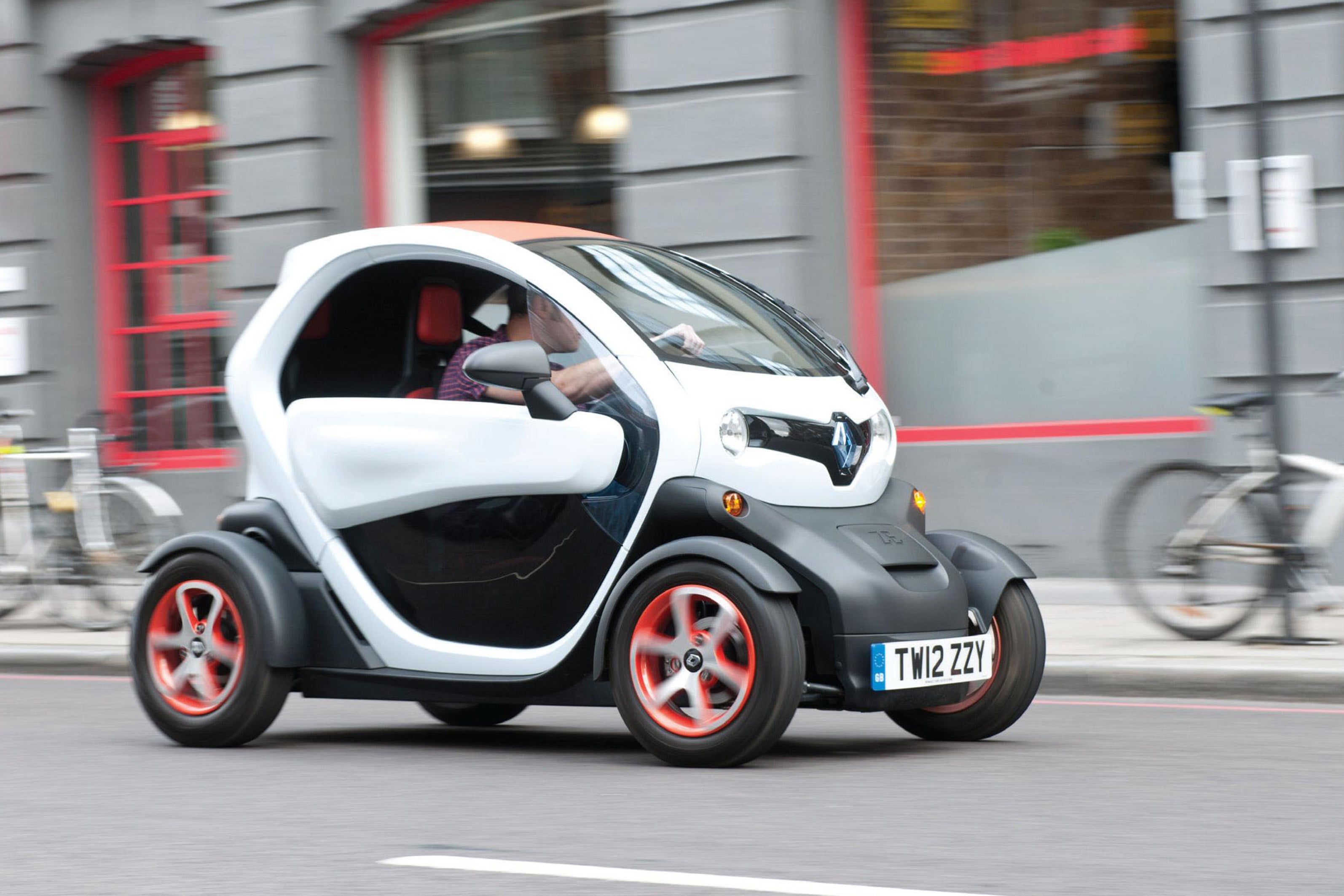Renault Twizy (2012-2021) Review
Written by Andrew Brady
- 2012
- City car
- EV
Quick overview
Pros
- Affordable introduction to electric cars
- It’ll make everyone else smile, even once you’re bored of it
- Safer than a scooter
Cons
- It’s not going to replace your family car
- Pretty grim to drive in poor weather...
- ...or on the motorway
Overall verdict on the Renault Twizy
"Is it a plane? Is it a car? Actually, it's a quadricycle – a hilarious introduction to electric urban mobility that's slightly more useful than a moped but not quite as useable as an actual car."
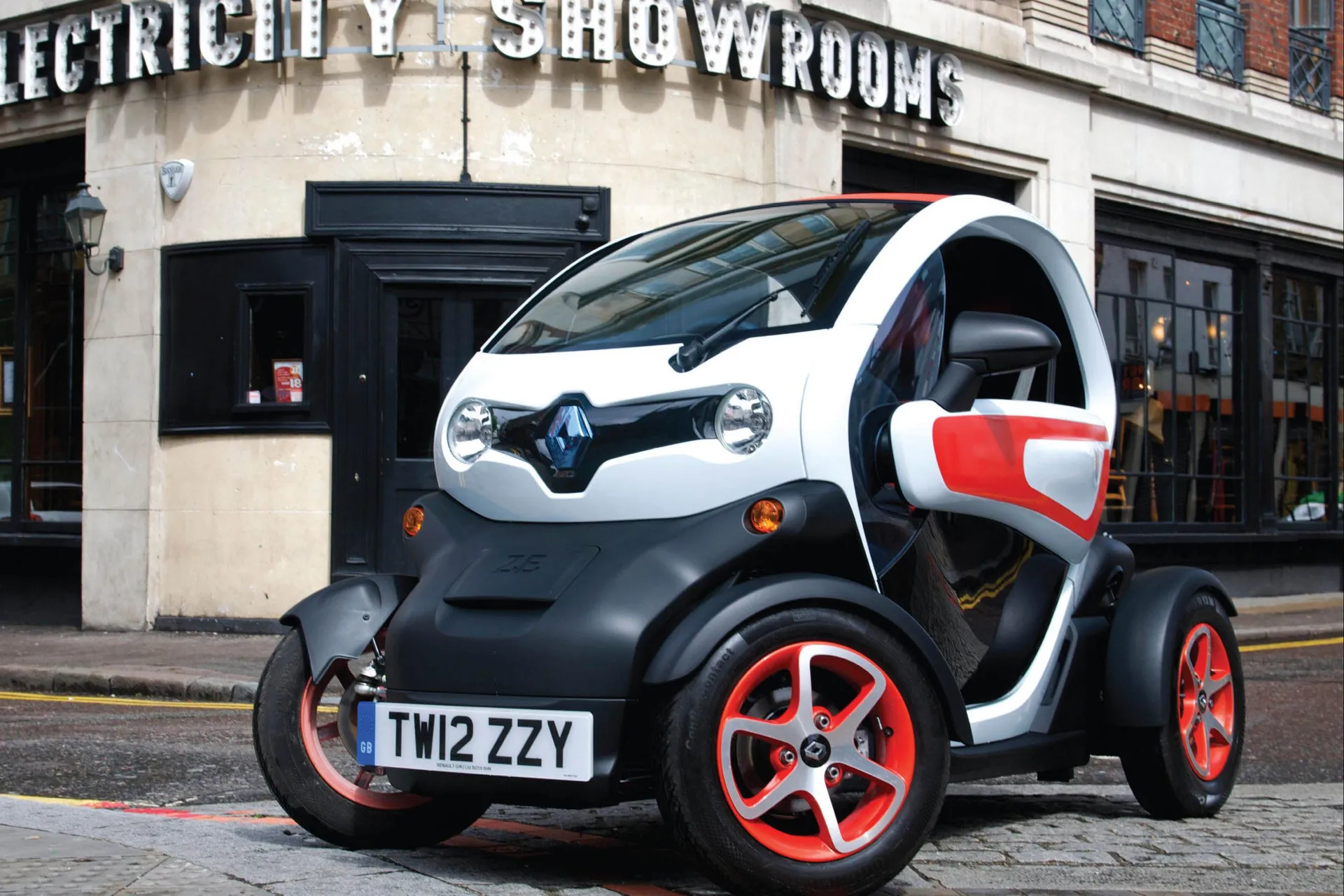
The Renault Twizy is the kind of car (sorry, vehicle) that should never have made it into British showrooms. It's a barmy idea that stands up to scrutiny as a rental on a summer holiday in the Balearics but, as you'll read in our Renault Twizy review, it's not really up to the job of commuter transport here in the UK.
So what exactly is it? Well it's sort of a mix between a moped, a quad bike and a small city two-seater like the Smart EQ Fortwo. You need a full car licence to drive it, it's not classified as a motorbike but a quadricycle so you don't need a crash helmet, but it does carry two people - just about anyway - with the passenger sitting right behind the driver.
You have to treat it like a motorbike in some respects though. It doesn't come with any doors (they were a £545 optional extra when new) and even with them there are no side windows, so you're always open to the elements. In wet weather, suitable clothing is essential. The scissor doors open upwards which adds to the funky feel of the Twizy, plus it also makes getting out in tight spaces easy.
Renault describes the Twizy as 'out of the ordinary' and it's certainly that. It looks like something from a sci-fi film or a theme park. It really is a diddy little thing at less than 2.5 metres long and 1.5 metres wide while it weighs around 475kg. Those small dimensions mean you can park the Twizy nose on to the pavement (like a Smart) and with a tiny turning circle it fits into the smallest of small spaces.
You turn the key, push the D button on the dash, release the handbrake and off you go. There's just one gear so you always have power available and the steering is nice and responsive so it's easy to nip round tight corners. You actually sit right on top of the battery - the single heaviest part of the car - which means a low centre of gravity and good stability. Even at its top speed of 53mph, which feels very fast in such a small vehicle, the Twizy is stable and reassuring.
The big problem can come from other road users. Some drivers don't see it as a bona fide car and will simply drive around you, even if you're at the speed limit. Others don't realise how fast it is and will simply pull out in front of you on main roads. Despite that, it is still great fun to drive and every journey feels like an event. It really is unlike anything else and attracts huge amounts of attention thanks to its futuristic design.
The one main concern for buyers will be safety and it's something Renault is keen to highlight. Like the electric motor, the main structure of the Twizy was developed by Renault Sport, with influence from F1 technology, so it's light and strong. There's a driver's airbag, seatbelts for both people and disc brakes on all four wheels.
When it first hit the market in 2012, the Twizy started at £6690. That's fairly affordable as a second or even third car if you live in London while the top model cost £7400 and got the neat alloy wheels. A surge in interest in electric vehicles means the Twizy is more expensive now than it was new – which makes it even more difficult to justify.
Sub-£10k doesn't go very far in the world of electric cars, but you can get some tempting deals on cars like the Volkswagen e-Up, Skoda Citigo-e iV and SEAT Mii Electric – a trio of excellent little electric cars that have enough room for passengers and the weekly shop. Okay, a few bags of shopping anyway. You might also want to look at the Smart EQ Fortwo or, if you really are a glutton for punishment, there's the new Citroen Ami.
Looking for a used car for sale? We've got 100s of Renault Approved Used Cars for Sale for you to choose from, including a wide range of Renault Twizy electric cars for sale.
Is the Renault Twizy right for you?
Most buyers would be better looking for a 'proper' electric car – something like the Renault Zoe, Smart EQ Fortwo or Volkswagen e-Up. If the novelty factor of the Renault Twizy appeals, though, and you don't need to travel very far, it could be a fun purchase. It's arguably more comfortable than the tube network – and it'll probably cost you less to run, too.
What’s the best Renault Twizy model/engine to choose?
Your choice is limited. There's just one battery size, one electric motor and two trim levels. We'd probably look for one with the optional doors, while the Twizy Dynamique looks a bit smarter thanks to its alloy wheels and bold colour combinations.
What other cars are similar to the Renault Twizy?
If you're looking for an affordable electric vehicle, there's no shortage of very good options. You could consider a SEAT Mii Electric (alongside the very similar Volkswagen e-Up and Skoda Citigo-e iV), a Fiat 500 Electric or a Smart EQ Fortwo. All of them are a lot more usable than the Twizy, with longer ranges and much less spartan interiors.
If you're after urban mobility (and don't want to invest in a bicycle), the closest thing to a Twizy is actually a much newer alternative – the Citroen Ami. It takes a similar approach to the Twizy, with four wheels, two seats and the word 'quadricycle' on the V5. It's also a bit of a bargain, with a brand new Ami available for around the cost of a secondhand Renault Twizy.
Comfort and design: Renault Twizy interior
"You can't lock the Twizy and even doors will cost a premium, so it should come as no surprise that the interior is a rather simple affair."
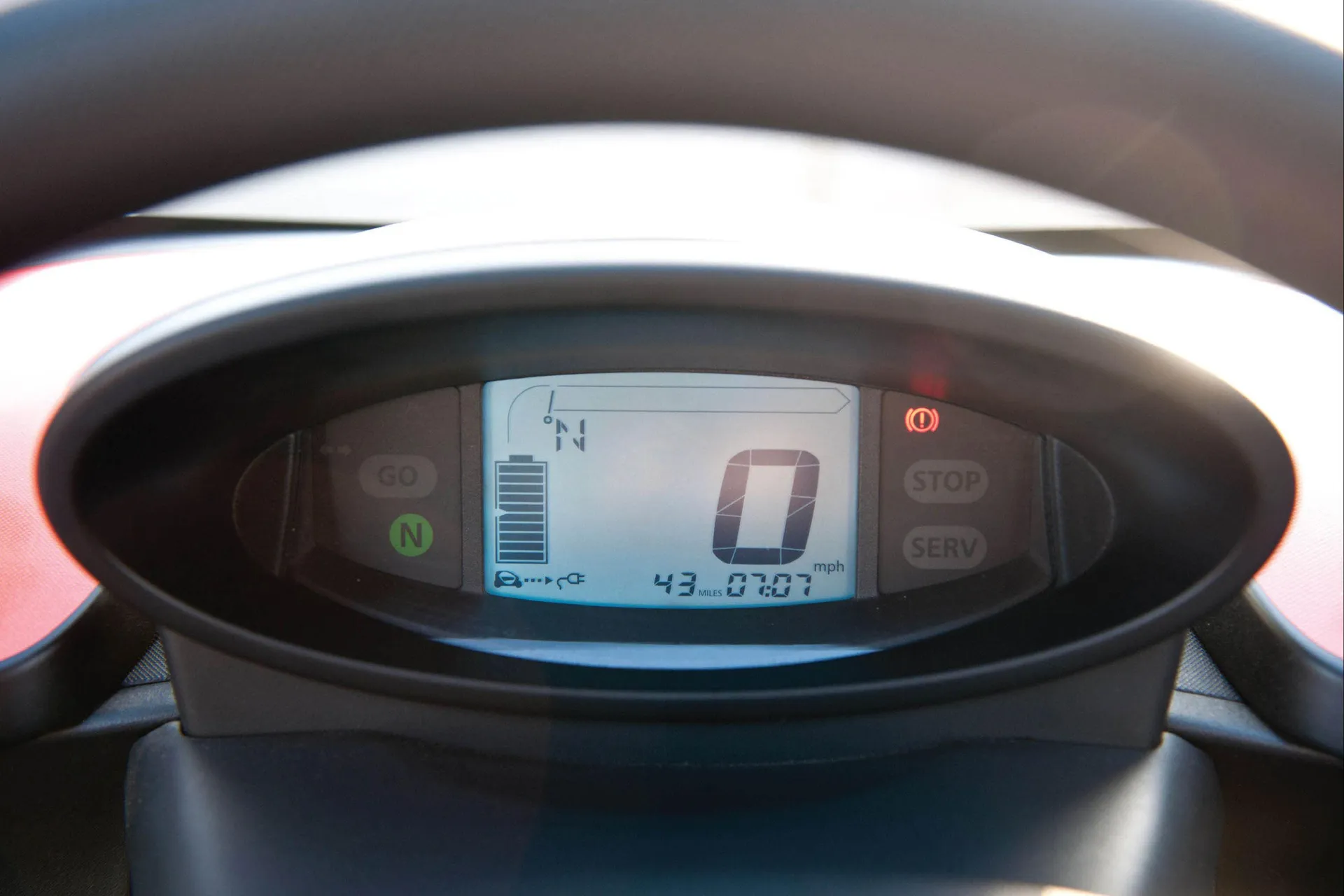
You get more of an interior than you would on a moped, but there's little more to it than two firm seats (one behind the other), a few controls and a steering wheel. It's not exactly comfortable, but it's not the kind of car you're going to spend an extended amount of time in, either. The driver's seat moves backwards and forward, although there isn't any height adjustment and the steering wheel doesn't move.
The majority of UK Twizy buyers do opt for doors and they're rather nifty scissor doors with zip-on windows. Once you've got over the novelty factor, you'll find that the bigger Renault Zoe's interior is much more comfortable. Even the Citroen Ami is marginally more weatherproof.
Quality and finish
Renault's interiors aren't exactly known for standing the test of time, but the Twizy's simplicity might be on its side when it comes to long-term durability. It's clearly been designed with weatherproofness in mind, so you'll find lots of hard, plastic surfaces and little in the way of plushness.
The seats are finished in waterproof black vinyl which is designed to prevent a soggy bottom when driving in the rain, while the only hint of swank is the carbon-effect dashboard.
Infotainment: Touchscreen, USB, nav and stereo in the Renault Twizy
You provide your own entertainment in the Renault Twizy. There's no conventional infotainment system, and if you want navigation we'd recommend investing in a phone holder and downloading Waze. At the centre of the dashboard, you'll find a simple screen showing you essential data like how fast you're going and how much battery capacity you have remaining.
If you're lucky, the Twizy's original owner will have stumped up the cash for the optional Bluetooth sound system. Don't expect to hear a great deal, though, especially above city-centre speeds.
Space and practicality: Renault Twizy boot space
There are just two seats in the Renault Twizy - one behind the other. Jump in the driver's seat and you'll probably find that there's more room than you'd think. Even if you're towering over six foot, you're unlikely to be bashing your head on the Twizy's roof. If you've got big feet, though, you might be in danger of mashing both pedals at the same time.
Space in the back is a bit more limited (especially if the driver shifts their seat all the way back), but it's more comfortable than riding as a pillion passenger on a motorbike.
There isn't a boot as such, just a small 31-litre storage compartment under the rear seat. This is lockable, as well as the two small gloveboxes, but something like a Fiat 500 Electric is eminently more useable.
Handling and ride quality: What is the Renault Twizy like to drive?
"While the Renault Twizy looks anything but conventional, it's pretty simple to drive. There's a steering wheel, two pedals and buttons on the dashboard to select drive or reverse."
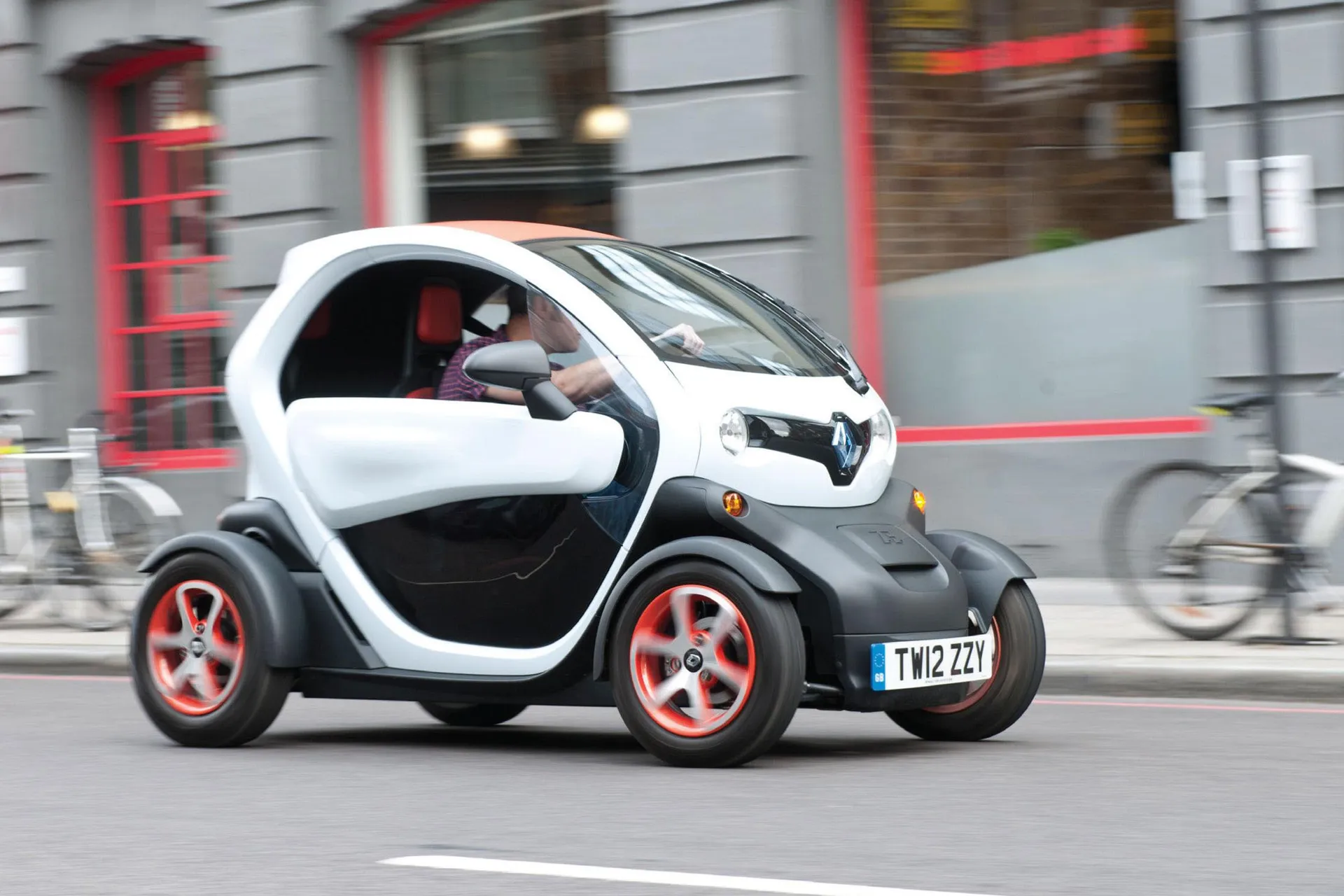
With compact dimensions and excellent visibility, city streets pose no challenge for the Renault Twizy. You might encounter a few frustrated car drivers if you attempt to filter through traffic like on a moped, but the Twizy's 6.8-metre turning circle means you can outdance a London cabbie.
While the Twizy rides on conventional coil-spring suspension, it doesn't seem to do an awful lot. Indeed, you'll soon learn to dart around potholes or slow down for speed bumps – otherwise, the Twizy will make you feel very uncomfortable indeed.
Out of town, the steering is surprisingly direct and, thanks to the low-down positioning of the battery pack, it remains surprisingly composed during cornering. There's plenty of grip on hand (even with the Twizys' ultra-narrow eco tyres), but be careful – ABS brakes aren't available, so coming to a sudden stop could be problematic, especially in the wet.
What motors and batteries are available in the Renault Twizy?
With just 17PS on hand, the Renault Zoe is no rocketship in terms of performance. There's 57Nm of torque available, though, available instantaneously – as soon as you hit the accelerator pedal, you'll propel forwards at a rate quick enough to surprise a few Deliveroo riders (or even the Zoe's closest rival, the new Citroen Ami).
Power comes from a small 6.1kWh battery pack which can be bought with the vehicle or leased separately. As well as saving you money on the purchase price, a hired battery also includes 24/7 roadside assistance (even if you run out of charge) and, if the battery performance drops below 75% of its original capacity, it will be repaired or replaced at no cost.
Maximum electric range in the Renault Twizy
While the Renault Twizy can officially travel up to 56 miles between charges, the carmaker says that 43 miles is more realistic in the real world. This will drop to 31 miles in colder weather.
That's considerably less than newer, bigger electric cars (like the Vauxhall Corsa-e), but it could be enough for city centre commuting or darting around town on errands. It'll be easier than travelling 43 miles on a pushbike, anyway.
Refinement and noise levels
When you're creeping along in stop-start traffic, refinement levels aren't bad at all. There's no engine noise, obviously, but there's also little protection from the outside world. That means you'll have to shout at your passenger to be heard at anything over a snail's pace, while there's quite a distinctive whine from the electric motor as you build speed.
Maximum speed is just 50mph but, to be honest, you're unlikely to want to exceed this. We wouldn't recommend using the Renault Twizy for motorway driving (there'll be lots of angry lorry drivers overtaking you) but, if you are planning to use it out of town, we'd highly recommend looking for one with the optional doors. It's still not as refined as an actual car, but they do make things a little more bearable.
Safety equipment: How safe is the Renault Twizy?
When it comes to safety kit, the Renault Twizy isn't exactly up to the same standards as bigger electric vehicles like the Renault Zoe or Peugeot e-208. The list of highlights is a bit like you'd find in a brochure from a car 20 years ago – it includes things like four-point seatbelts, a driver's airbag and, er, that's about it.
Still, that's more than you'd get on a moped or pushbike. The Twizy's tubular frame is also designed to protect you from impacts, while standard-fit disc brakes should bring you to a stop pretty rapidly.
The Renault Twizy was awarded just two stars for safety when it was crash-tested by Euro NCAP in 2014.
Charging times: How much does it cost to charge the Renault Twizy?
"The advantage of the Renault Zoe's tiny 6.1kWh battery is that it takes almost no time at all to charge. It can be fully topped up in just three and a half hours using a standard three-pin wall socket."
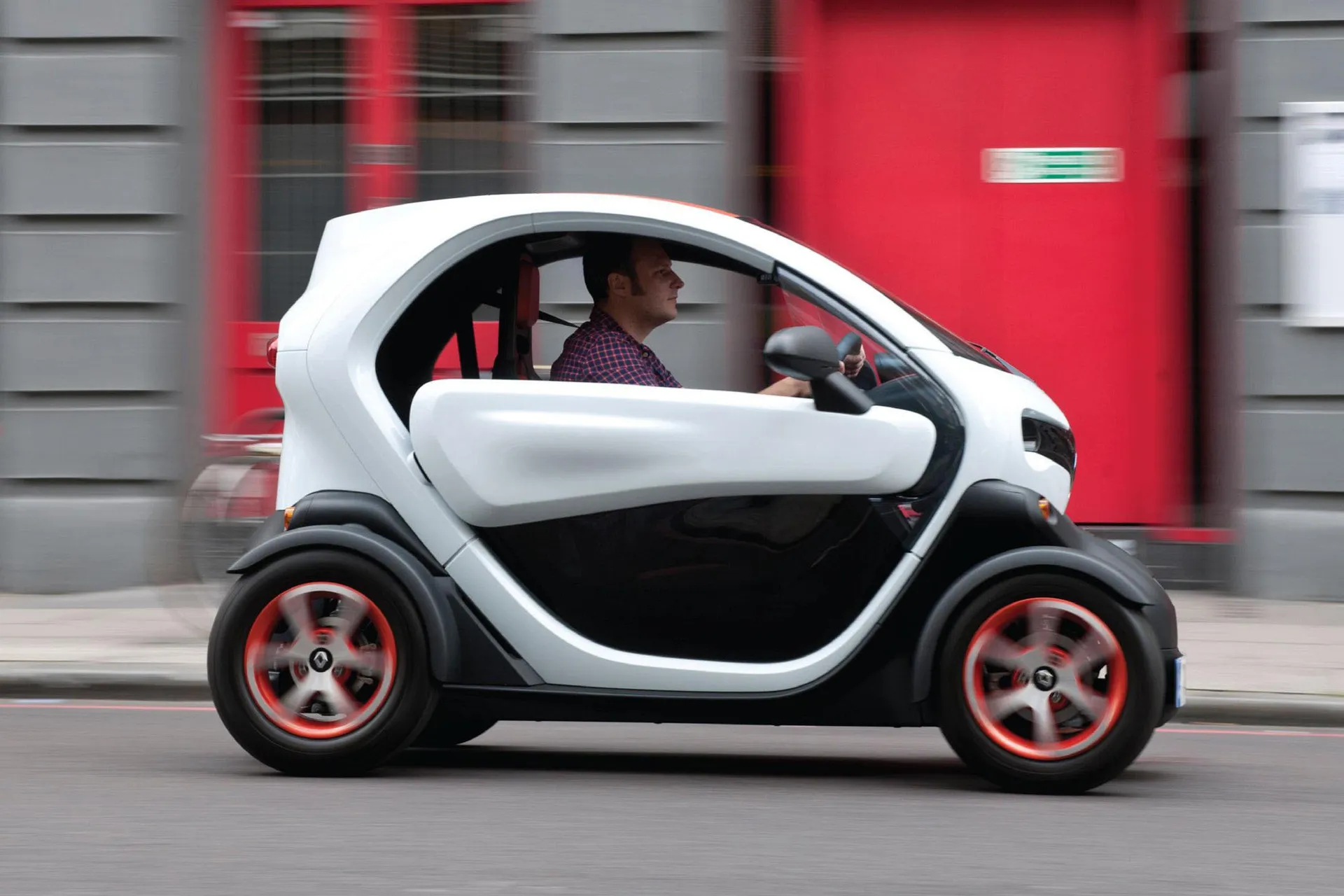
Charging the battery is simple. There's a flap on the front of the car and inside a three-metre spiral cable that plugs into any 230-volt household socket. Depending on your home electricity tariff, a full charge will cost around £1. If you cover 50 miles from a charge, that equates to just 2p a mile – only walking will get you there cheaper.
If you want to charge the Twizy when you're out and about, you'll need to buy an adapter to make it compatible with type two charging stations. The Twizy is limited to how fast it can charge, so using one of these won't save you any time compared to charging at home, but it could stop you from being stranded. Don't bother attempting to use a motorway rapid charger – it just isn't compatible.
How reliable is a Renault Twizy?
Electric vehicles are generally very reliable and the Renault Twizy is so simple, there's little to go wrong. We've heard of very few issues with the Renault Twizy, while it's covered by the brand's five-year unlimited-mileage warranty.
Insurance groups and costs
With insurance groups as low as 6A, the Renault Twizy shouldn't cost a lot to insure. It'll certainly be cheaper than a Nissan Leaf or MINI Electric, but try shopping around for insurance quotes to see how it compares to a conventional small petrol car.
VED car tax: What is the annual road tax on a Renault Twizy?
As the Renault Twizy is a pure-electric vehicle, there is no VED (road tax) to pay. It's also exempt from the Congestion Charge, so you could save cash with the Twizy if you live in London.
How much should you be paying for a used Renault Twizy?
"Considering the Renault Twizy started from less than £7000 when it was new in 2011, it's remarkably expensive on the used market today. You'd be lucky to pick one up for £6500 – while later examples are topping £12,000. That's a lot of money for a car that isn't really a car."
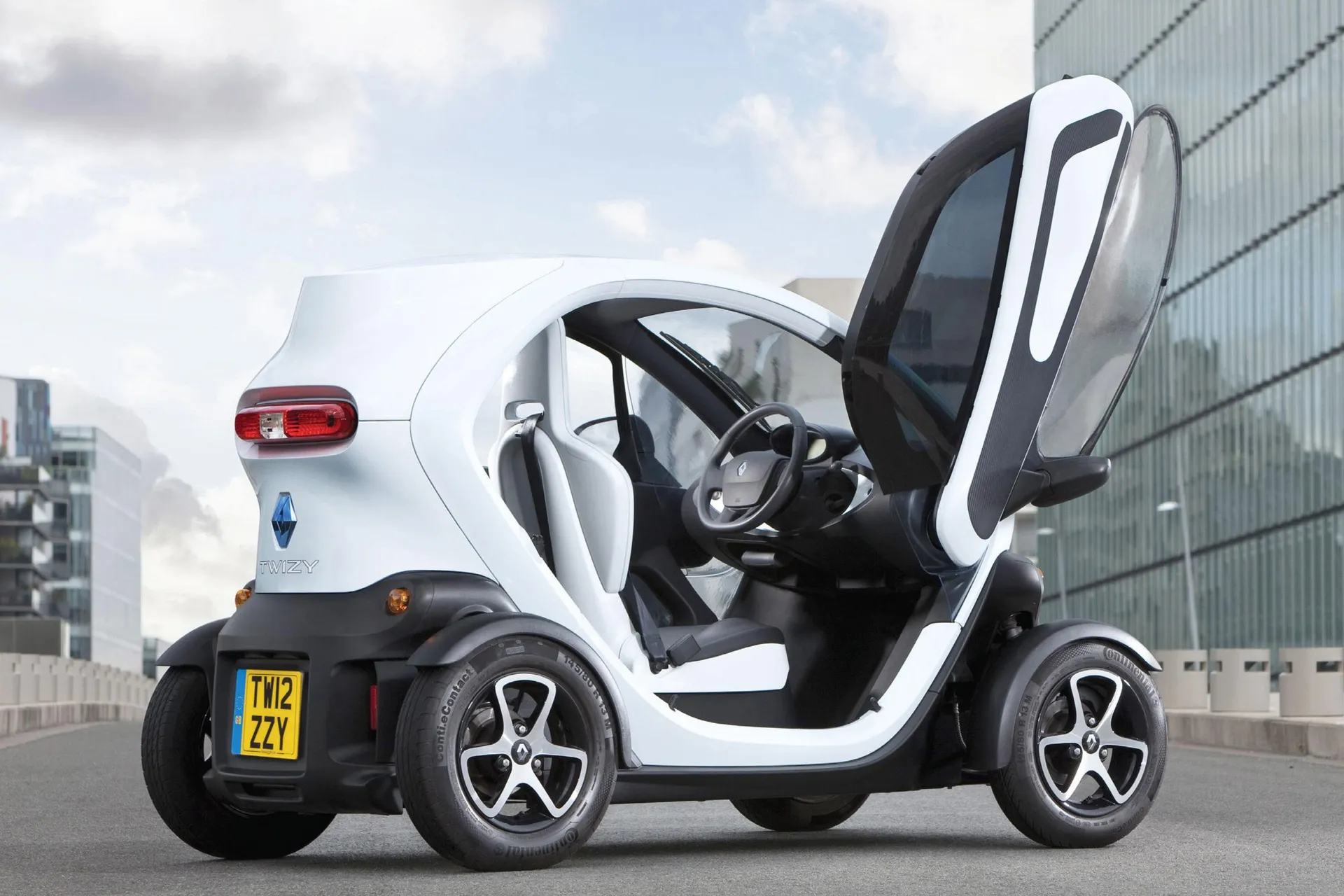
Prices are reflective of the Renault Twizy's low running costs and the demand for eco-friendly urban transport. One thing to be cautious of is whether the battery's included – as we mentioned above, Renault offered the Twizy with a battery hire deal and a lower purchase price. Used Renault Twizy models without the battery included should be more affordable.
Understandably, most used examples won't have covered many miles, and condition (and spec) is just as important as age when it comes to value. The good news is that a Renault Twizy ought to hold on to its value pretty well – so even though you'll pay strong money now, you should get a significant chunk of it back when it's time to sell it on.
Trim levels and standard equipment
The Renault Twizy is sparsely equipped... but that's kinda the point. There are two core models (not including the Twizy Cargo van): Expression and Dynamique.
Standard equipment on the Renault Twizy Expression includes steel wheels (with grey wheel trims), a heated windscreen, driver's airbag and a range indicator with eco score. That's about it.
The Renault Twizy Dynamique builds on this with a choice of 14 colour combinations, 13-inch alloy wheels and interior floor mats. Things like doors (yes, doors...), a Bluetooth sound system and an anti-lift alarm were all offered as optional extras.
Ask the heycar experts: common questions
How much does a Renault Twizy cost?
Is the Renault Twizy a car?
Is the Renault Twizy legal in the UK?
Get our latest advice, news and offers
Keep me updated by email with the latest advice, news and offers from heycar.
By submitting you agree to our privacy policy
